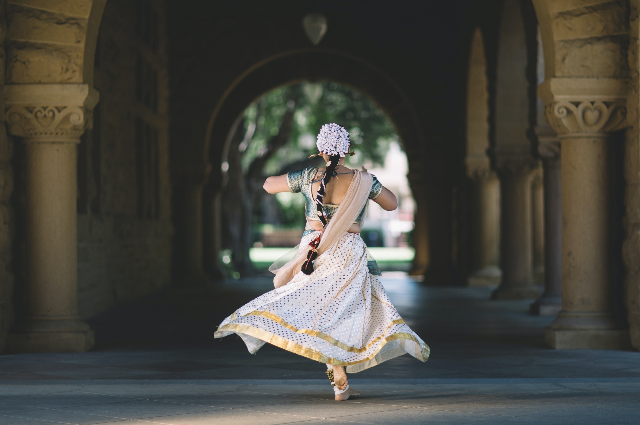
Kathak the classical dance style form of North India conjures up the vision of scintillating footwork and lightening "chakkars" that is pirouettes. The word 'kathak' is derived from the word 'katha' which means a story. In ancient times the wandering bards called 'katha Kars' used to go from village to village to recite the two epics of Hinduism 'Ramayana' and 'Mahabharata'. During the Muslim invasions the Persian influence also came into the art brought in by the Dancing girls called 'tawayafs' which was a spiritual dance, and slowly started turning into a profession. Today we see Kathak as a blend of these two streams. In order to make their art more attractive these katha Kars inculcated step and rhythm to their recitals to communicate their stories through rhythmic foot movements, facial expressions, hand gestures, and eye movements. It has got a courtly atmosphere along with being highly spiritual.
A Practice which started in the earlier centuries of the Christian errand was a simple form of expressional dance that evolved into a distinct style in the 15th and 16th centuries with the popularization of Radha-Krishna Legend and the emergence of Madhura Bhakti a special manifestation of Vaishnavism. This emergence of Madhura Bhakti gave rise to an operatic play called 'Raas-Leela' which developed mainly in the areas of Braj associated with Lord Krishna's early life. This 'Raas-Leela' gradually developed into a well-established folk Theater which a harmonious blend of song, storytelling, acting, and dancing.
With the advent of Muslim Rulers Kathak turned into a court dance from Temple Dance. This resulted in two different styles, where one style of dance in the court of Jaipur and the other in the courts of Delhi, Agra, and Lucknow. Yet in both these styles, Kathak was treated as a solo artist where the touchstone of excellence was the virtuosity of the solo Dancers especially their command over 'laykeri' of footwork.
Basically, there are three Gharanas of Kathak - Lucknow, Banaras, and Jaipur. The brand of kathak stressed on 'nritya' filled with 'bhaava' making kathak more graceful and sensuous it came in existence during the rule of Wajid Ali Shah. He was a popular ruler of Awadh and spent lavishly on dance and music, much to the disgust of the British East India Company who exiled him to Calcutta and annexed his principality. Until his death, he spent lavishly on Dance and Music.
